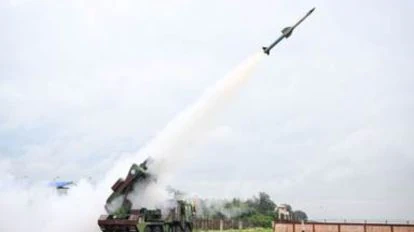New Delhi: In a significant leap towards India’s self-reliance in defense technology, the Defence Research and Development Organisation (DRDO) has successfully conducted a critical test of its indigenous air defence system under the ambitious ‘Mission Sudarshan Chakra.’ This achievement marks a major milestone in India’s efforts to develop advanced air defense capabilities by 2035.
The air defence system, designed to neutralize a variety of aerial threats including fighter aircraft, drones, and precision-guided munitions, demonstrated exceptional accuracy and reliability during the test. According to DRDO officials, the system successfully intercepted and destroyed high-speed aerial targets in challenging conditions, validating its cutting-edge radar, tracking, and missile guidance technologies.
Officials emphasized that the successful trial reinforces India’s commitment to strengthening its defence preparedness through indigenous solutions. “This test signifies a step closer to our vision of making India self-reliant in critical defence systems. The air defence platform tested today will play a pivotal role in securing our skies against evolving threats,” a senior DRDO scientist said.
‘Mission Sudarshan Chakra’ is a long-term strategic initiative aimed at developing a comprehensive and layered air defence shield for the nation by 2035. The mission focuses on integrating next-generation technologies, including artificial intelligence-driven threat detection, hypersonic missile interceptors, and advanced electronic warfare systems.
Defence experts believe that this breakthrough not only enhances India’s air defence architecture but also positions the country among global leaders in the development of indigenous defence technology. The move aligns with the government’s ‘Atmanirbhar Bharat’ initiative, which aims to reduce dependence on foreign weapon systems and promote domestic research and manufacturing.
Further user trials and integration with the Indian Armed Forces are planned in the coming months, paving the way for full-scale deployment in the next phase of the mission.

